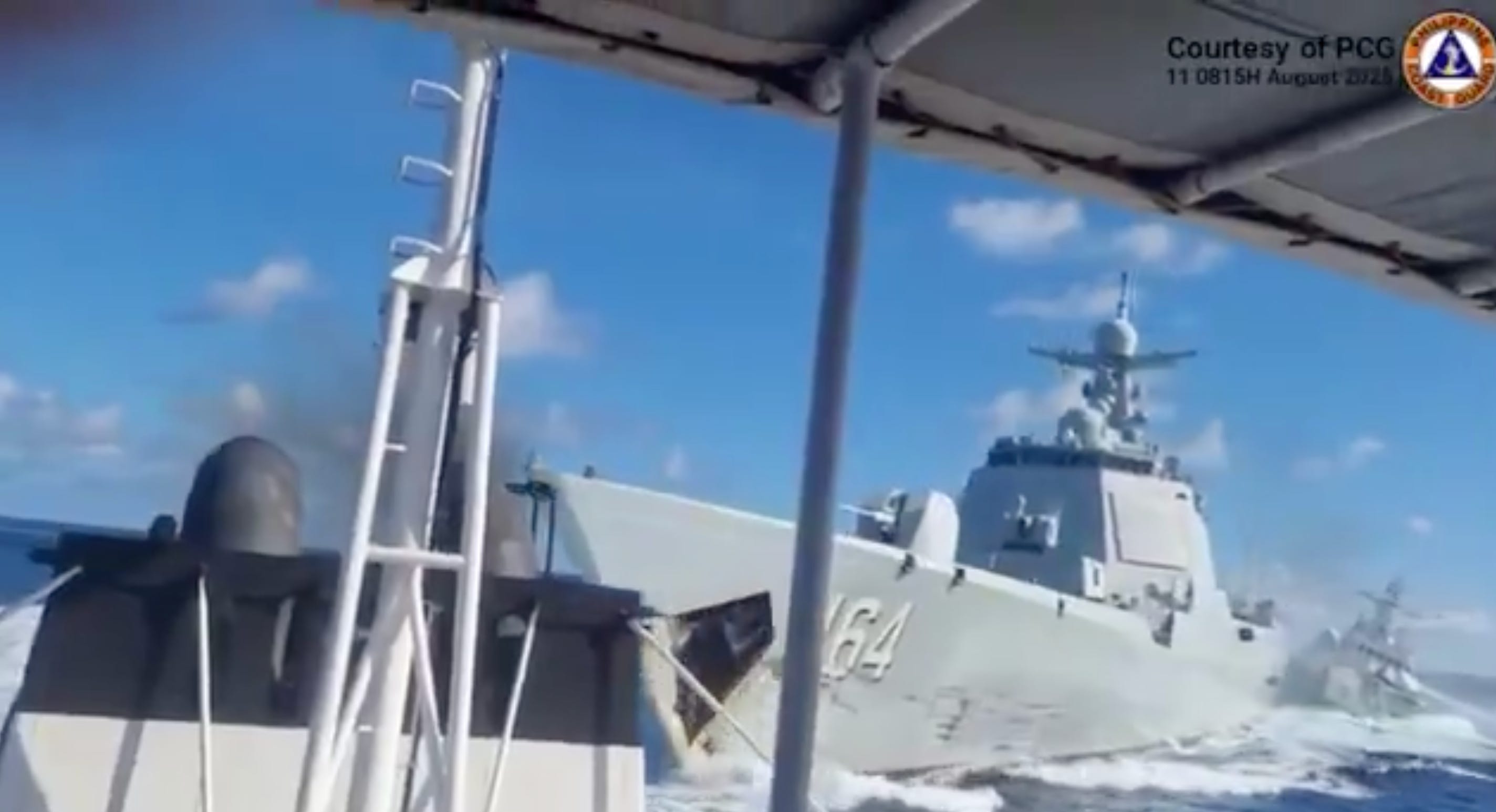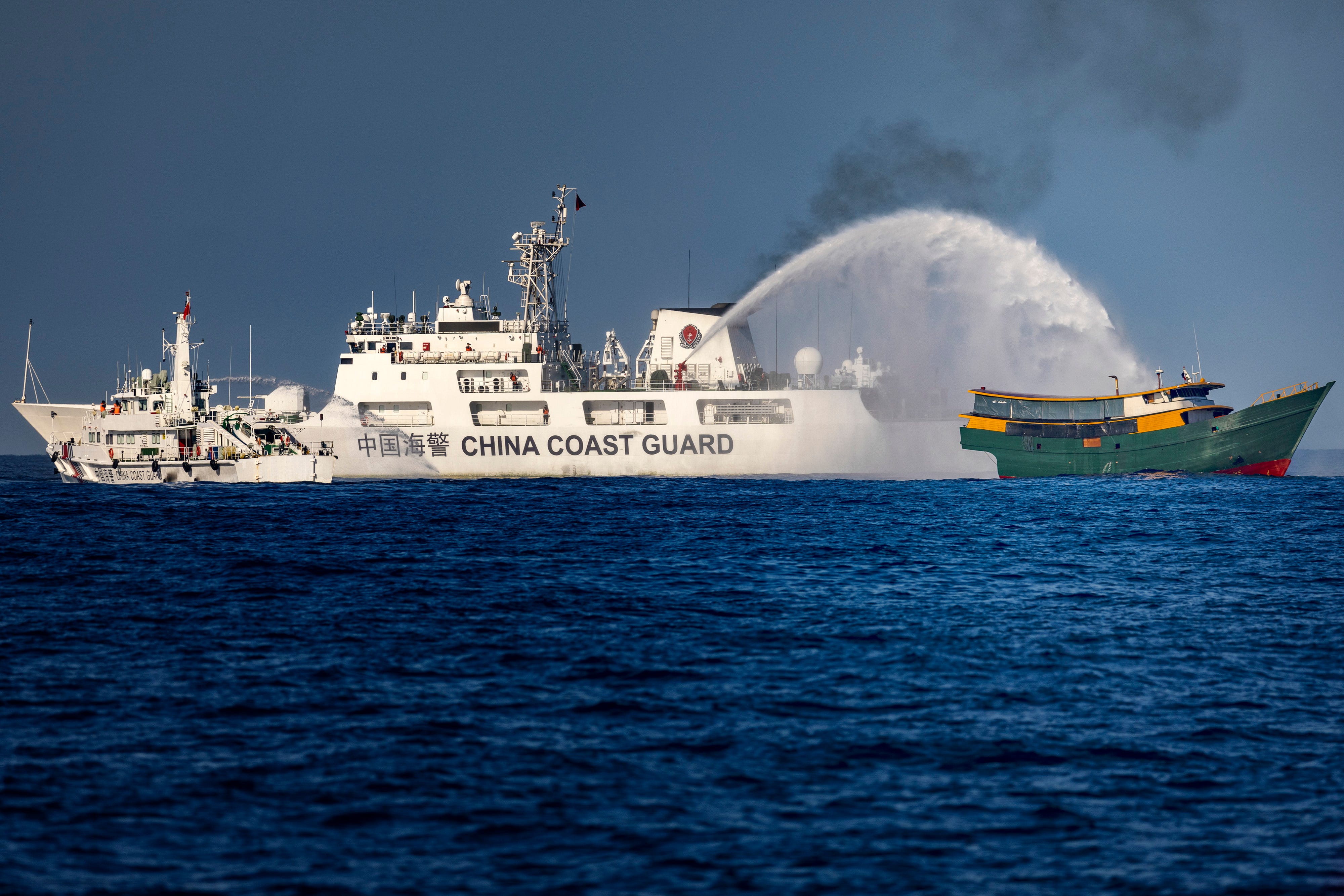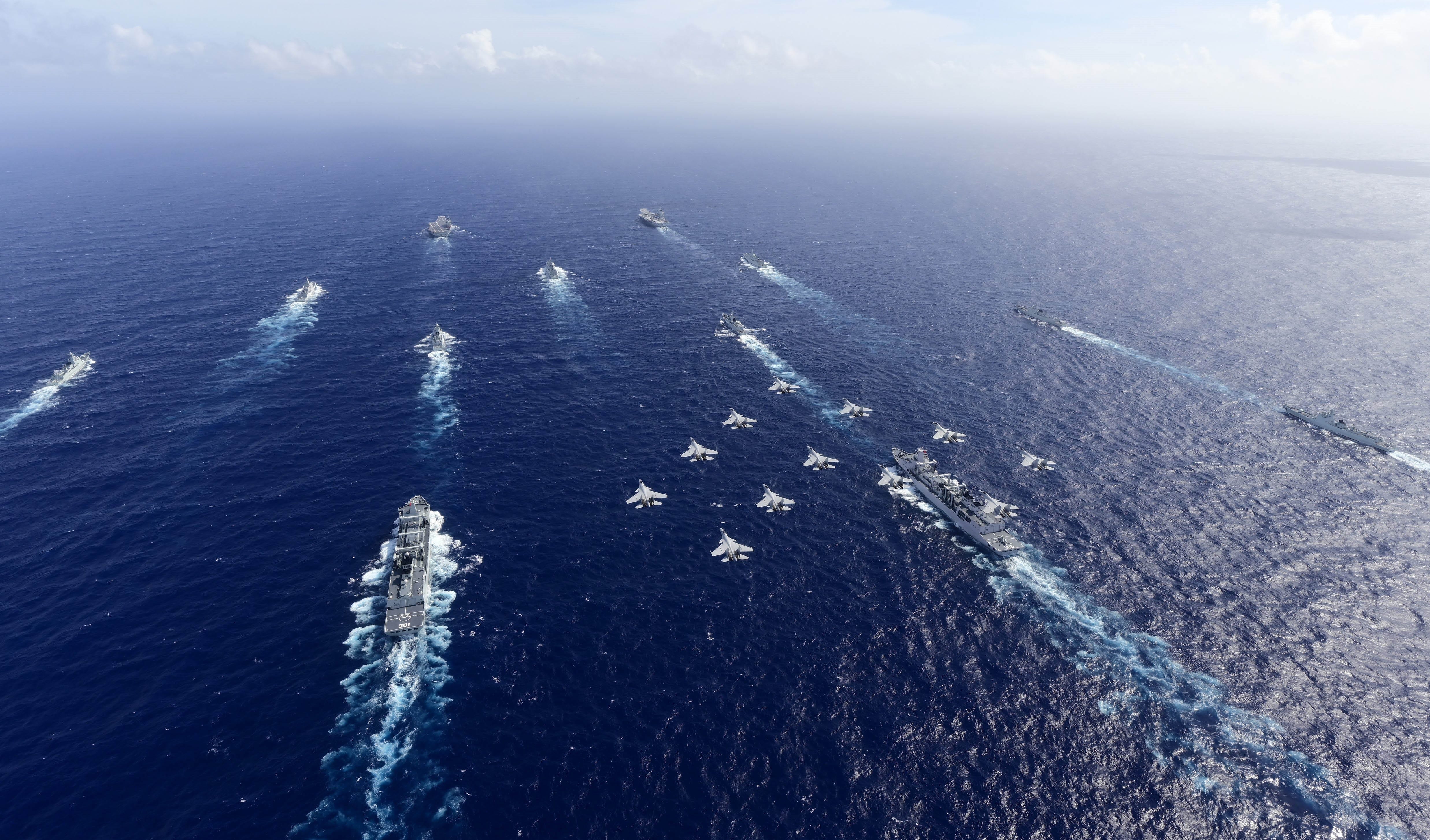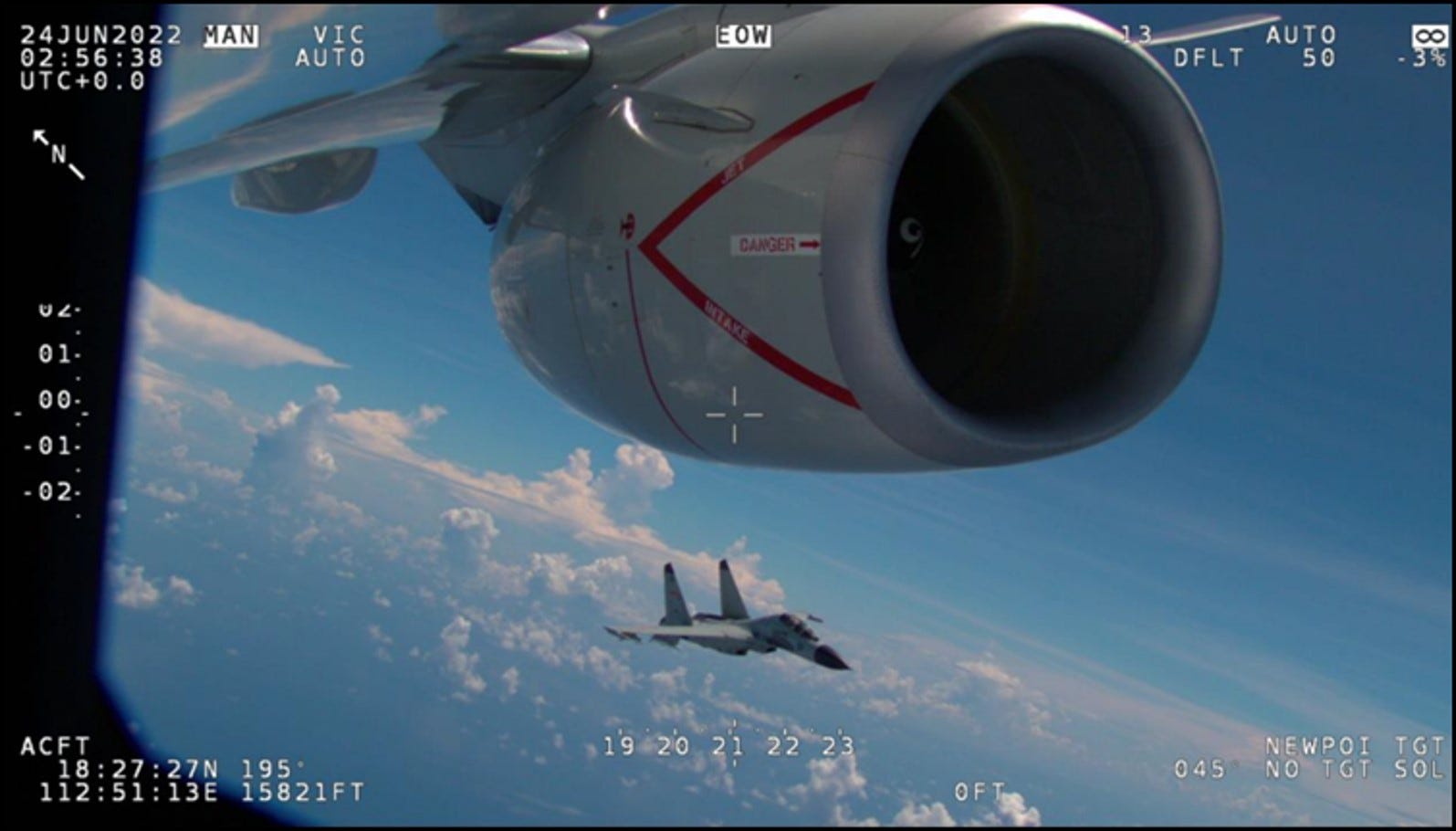
Jay Tarriela, Philippine Coast Guard Spokesperson
The collision of two Chinese vessels in the South China Sea this week was dramatic — and, according to China watchers, predictable.
For years, China’s military, coast guard, and maritime militia have been accused of using aggressive tactics such as close-range intercepts, blocking runs, chases, and water cannon harassment to assert control over contested waters. These maneuvers make accidents like Monday’s crash, which saw a destroyer crush a coast guard cutter, much more likely.
“It is part of China’s standard operating procedure to intentionally engage in unsafe behavior and create risks of collision at sea and in the air,” said Gregory Poling, a senior fellow at the Center for Strategic and International Studies think tank and director of the Southeast Asia Program and Asia Maritime Transparency Initiative there.
A disastrous collision

JAM STA ROSA/AFP via Getty Images
On Monday, the Philippine Coast Guard shared footage of China Coast Guard vessel 3104 in hot pursuit of the Philippine patrol ship BRP Suluan at high speeds while spraying a water cannon about 11 nautical miles east of the contested Scarborough Shoal.
As the cutter closed in on the BRP Suluan, a larger Chinese Navy destroyer crossed the bow of the cutter, which, unable to maneuver out of the way, violently slammed into the warship. The video showed both Chinese vessels afterward with significant hull damage, though only the coast guard ship was effectively crippled.
Before the crash, the destroyer and cutter appeared to criss-cross in the water repeatedly in their pursuit of the Philippine vessel.
Philippine Coast Guard spokesperson Jay Tarriela said that the Chinese coast guard vessel “performed a risky maneuver,” leading to the impact. He said the damage to the Chinese cutter’s forecastle rendered it unseaworthy.
In the aftermath, China watchers said the incident was caused by reckless Chinese actions in the South China Sea, pointing to a pattern of behavior that raises the risk of collisions. China has been repeatedly accused of violating the Convention on the International Regulations for Preventing Collisions at Sea.
“When the operational culture of a navy/coast guard is to habitually violate COLREGS and norms of professionalism, this is the tragic result,” Lyle Morris, a senior fellow at the Asia Society Policy Institute’s Center for China Analysis, wrote of Monday’s collision on social media.
“Normally, such an incident would lead to reassessments of operational safety to ensure such accidents do not happen again,” he said, adding that he doesn’t expect that to happen here.
Increasingly dangerous, high-risk maneuvers at sea

Ezra Acayan/Getty Images
Water cannon blasts. Close-quarters tailing. High-speed chases and cut-offs. As China has sought to enforce its contested claims of sovereignty in the South China Sea, which are considered to be inconsistent with international law, the Philippines has documented repeated incidents of Chinese coast guard ships harassing vessels. Some confrontations have escalated to the point of injuries among Philippine crews.
Lyle Goldstein, director of the Asia Program at Defense Priorities and the director of the China Initiative at Brown University’s Watson Institute, told Business Insider that these risky activities have seemed to increase in the last decade, which “partly reflects the fact that China has more and more maritime and aerial might to flaunt in these situations.”
Some of these actions — such as water cannon blasts or unsafe maneuvers — are known as “grey zone” tactics: operations that assert control without crossing the threshold into open conflict. But because they don’t follow established maritime safety protocols, experts say, they raise the likelihood of accidents and miscalculations.
“Water cannons, dangerous ramming maneuvers, and other unsafe actions have become the new normal,” said Christopher Sharman, a retired US Navy captain and the director of the China Maritime Studies Institute at the US Naval War College, who spoke to Business Insider in his own capacity.
Why this clash stands out

Sun Xiang/Xinhua via Getty Images
This week’s severe crash reflects an escalation, China watchers said, most notably because it involved a Type 052D destroyer, a multi-role guided-missile ship, rather than the usual suspects.
In previous incidents, China has often relied solely on its coast guard, or even the maritime militia masquerading as a fishing fleet, for assertive acts in the South China Sea, leaving naval forces on standby. Under Chinese law, the coast guard has broad authority to enforce maritime authority and sovereignty.
Keeping warships out of physical contact lowers the chance of miscalculation that could escalate quickly.
The Chinese Navy destroyer’s involvement in this clash, which saw the warship continue its pursuit of the smaller Philippine ship even after it crushed the Coast Guard vessel, stands out.
This is a rarer and riskier choice operationally that signals the contests in the South China Sea, long considered a flash point, are becoming more dangerous.
Sharman said its “deployment appears to be a calculated political decision from Beijing,” one potentially aimed at punishing Philippine President Ferdinand Marcos after his comments last week that Manila would be drawn into any conflict involving Taiwan due to its proximity to the island and the substantial number of Philippine workers there.
Either way, the warship’s direct involvement suggests China may now be willing to risk high-value assets in front-line harassment roles.
Had the Chinese destroyer smashed into the Philippine vessel instead of the Chinese coast guard cutter, this incident could have kicked off a major conflict, Goldstein said. The Philippines is an important US ally and defense partner.
It could have also resulted in a significant loss of life. It’s unclear whether any Chinese coast guard personnel were injured or killed. In the video, a few sailors could be seen on the bow of the 3104 just before it hit the destroyer. Tarriela said the Philippine crew offered to assist in the search and rescue. China did not respond.
China has made no official statement on the collision, the state of its vessels, or whether there were any casualties.
The Chinese embassy in the US referred Business Insider to a recent foreign ministry press briefing, during which the ministry spokesman accused the Philippines of engaging in “hazardous maneuvers,” such as “high-speed charges and sharp turns toward the bows of Chinese ships, leading to a complex and tense situation.”
What’s next

US Defense Department
The US and its allies have documented hundreds of unsafe Chinese actions in the air and at sea, from chases to clashes to unsafe intercepts, over the years. One particularly notable incident at sea occurred in 2018 and involved the US Navy.
That year, a Chinese navy destroyer came dangerously close to colliding with a US Navy warship, coming within just 45 yards of the American ship after aggressively closing with it in the South China Sea. The US said at that time that China was engaging in “increasingly aggressive maneuvers.”
Now, questions remain on whether China will reassess its tactics to avoid future clashes. Some China watchers note that because so many of China’s efforts have been viewed as successful within Beijing, China may double down on its current strategy and continue its pressure campaign.
Following the crash on Monday, a Chinese fighter jet engaged in what the Philippines characterized as “dangerous” moves near one of its aircraft.
“If China doesn’t change its behavior,” Poling said, “one of the accidents will cause a fatality, which could spark military escalation that no side wants.”
The post China’s catastrophic South China Sea crash shows how dangerous high-risk moves at sea can be appeared first on Business Insider.




